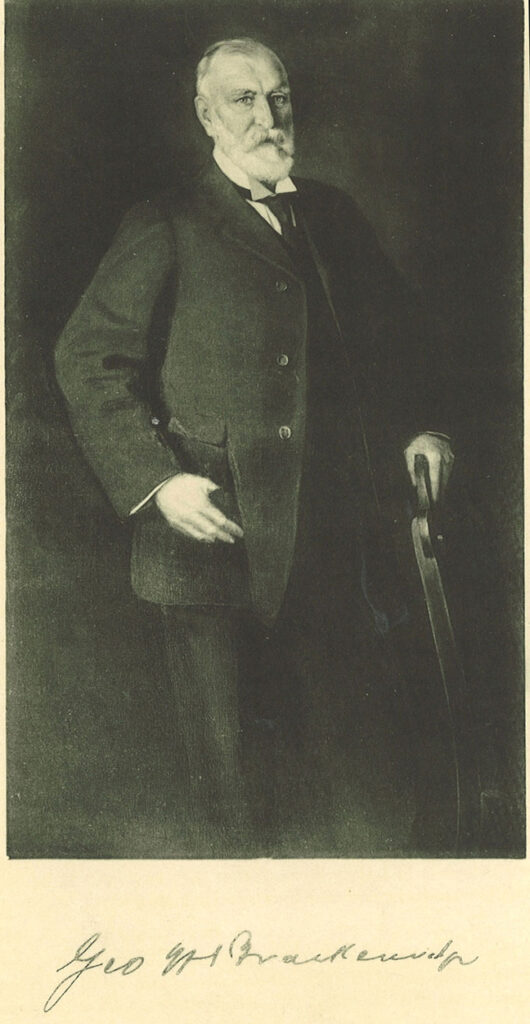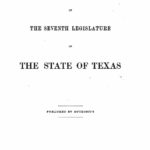Early History of San Antonio Water Works Company
by Melinda Luna PE | History & Heritage Committee Chair
November 2022
The San Antonio Water Supply Company was started by a group of San Antonians with the San Antonio Water Works Company in 1853. The idea of the San Antonio Waterworks company was to move the water from the springs into a reservoir and provide power. The first project built by the company was a pumphouse and a reservoir at what is now Manche Park. The expectation was that many of the citizens would sign up to be supplied with water. Rates were advertised in the San Antonio Daily Express for a residence starting at one dollar (27.03 in 2021 dollars) in 1878. After only of few people signed up, the San Antonio Waterworks was sold to George Washington Brackenridge in 1881.

Brackenridge saw that in general that people did not understand the connection between outbreaks of diseases such as cholera and dumping garbage and outhouses in an area that could impact the water supply
George Washington Brackenridge was a banker who believed that the springs that made up the San Antonio River and its water supply should be owned by the City. While a banker, he was educated in Hanover College and Indiana University. He trained as a surveyor and engineer and studied law at Harvard University. Brackenridge moved to Texas in 1853. He worked as a surveyor in Jackson county from 1857 to 1860. He served during the Civil War from 1863 to 1865. Coming back to Texas in 1866 to form the San Antonio National Bank. He saw that, in general that people did not understand the connection between outbreaks of diseases such as cholera and dumping garbage and outhouses in an area that could impact the water supply. At the time, there was no garbage collection. There was a cholera outbreak in 1866 with an estimated 750 cases with about 250 deaths. This is an estimated 3% of the population of San Antonio that died. There had been a flood in 1865, and it damaged the city’s sewer. Another large flood occurred again in 1869, and there were more outbreaks of disease. Brackenridge started talks with the City in 1873 to sell the City of San Antonio the land to be able to have better control of its water. He owned a large portion of land along the San Antonio River. The City ended talks with him on the sale of the land in 1890. Brackenridge built a second pump house and connected the two pump houses via a canal. This second pump house is known as Borglum studio because later, the pumphouse was used as a studio by Sculptor Gutzon Borglum to design and create casts for Mount Rushmore. Brackenridge then incorporated the San Antonio Water Works Company in 1895. He would head the San Antonio Water Works Company until 1906. With no children or wife, G.W. Brackenridge donated Brackenridge Park to the City of San Antonio at his death in 1920. The land at the headwater of the river was bought out by the Sisters of Charity of Incarnate Ward. This sale included the land of the Bluehole, which is now part of a park trail system. These lands were part of the original land grant from King of Spain given to the City of San Antonio. In need of funds, the city sold them off in the 1850s to raise funds.
The City of San Antonio had invited the National Water Works Company of New York to submit a proposal for water works in 1875. The National Water Works company had completed the system for Kansas City in the states of Missouri and Kansas. At the time, the company was relatively new and had had issues with other cities, which made the City of San Antonio turn down the proposal.
By the early 1900s’ people wanted to use modern conveniences such as modern plumbing (indoor toilets) and running water. In addition, the population was growing, almost doubling between 1900 and 1910.

The San Antonio Water Supply Company was then established and led by George Kobush of St Louis, buying out George W. Brackenridge in 1906. The Water Works were bought out by several organizations until it was sold to the City of San Antonio in 1925 for 6.5 million dollars (963 million in 2019 dollars).
While having a very dynamic history, the water system and the area around the springs were eventually owned by the city. Today the City of San Antonio’s water is supplied by the San Antonio Water system or SAWS. SAWS serves over 1.8 million people and is the best in the nation in innovations such as storing water underground to help manage water during droughts.

Photographic resources from:
https://www.saws.org/about-saws/history-chronology/
https://www.utsystem.edu/board-of-regents/former-regents/george-washington-brackenridge



